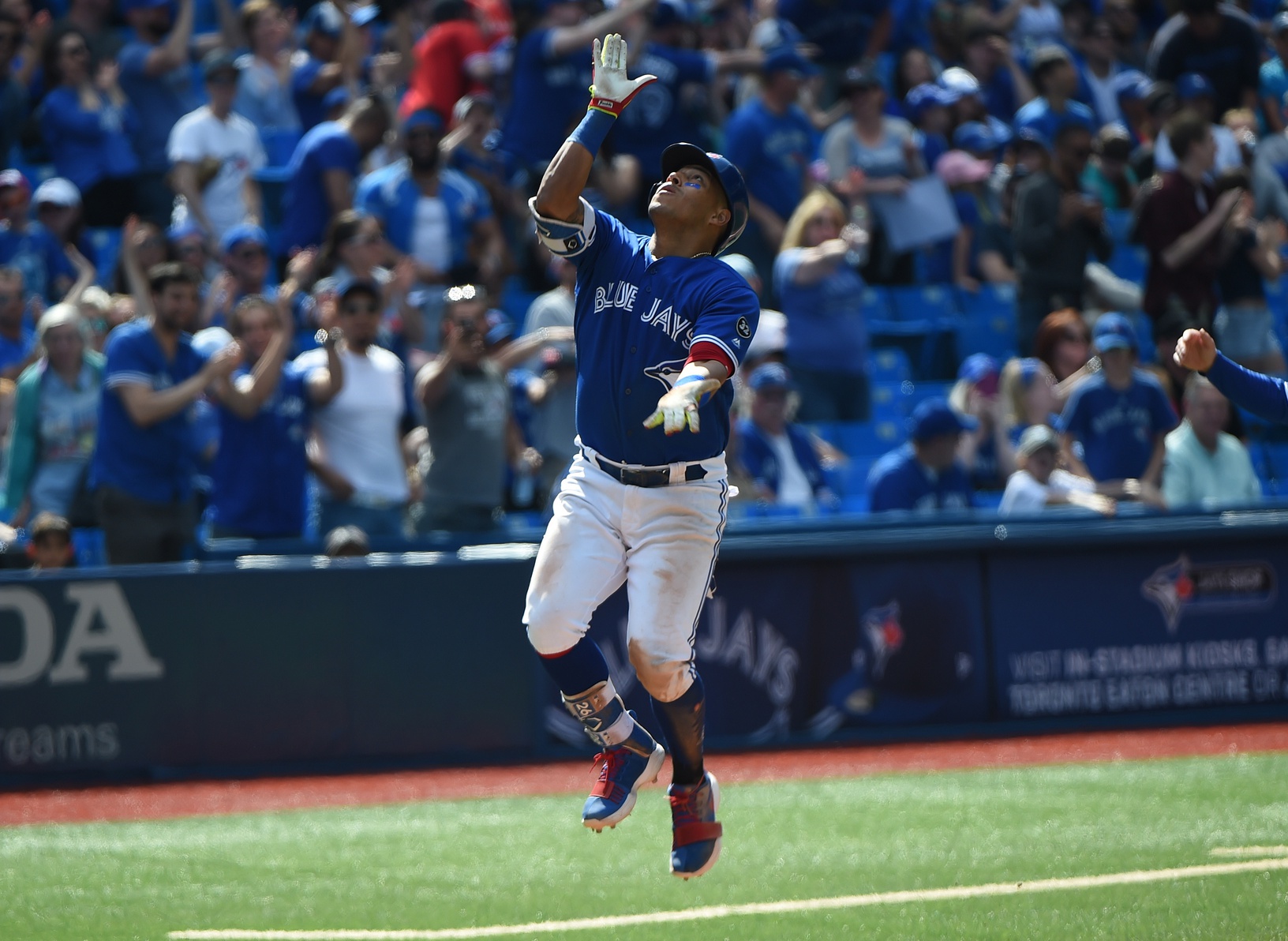When the Toronto Blue Jays acquired Yangervis Solarte from the San Diego Padres this past offseason for Edward Oliveras and Jared Carkuff, it was expected that he would get a lot of playing time as the primary backup infielder for the likes of Devon Travis and Josh Donaldson, with his ability to play some shortstop and first base as well adding to his expected value.
From a versatility standpoint, Solarte has been everything the Blue Jays could have hoped for and more, especially considering Devon Travis’ poor start to the season and eventual demotion to Triple A. From an offensive standpoint, though, Solarte has been nothing short of a huge upgrade over the players who manned his positions just a season ago. Offensively, Solarte came to the Blue Jays as a guy who did nearly everything well, but nothing exceptionally. Nothing that he brought to Toronto as a part of his offensive game stood out as a “wow” type tool. But to this point in the season, Solarte has “wowed” just about everyone with the amount of power he’s brought to the table, leading the team with 11 home runs and 33 RBIs. He’s also posted a 117 wRC+ and .485 slugging percentage, both well above his career averages 106 and .423.
The power definitely has been a lovely surprise to the Blue Jays offense, even more so with Josh Donaldson missing time on the disabled list and Justin Smoak not hitting for nearly as much power as he did a season ago. With Solarte on pace to far surpass his career high of 18 home runs and set a career high in ISO, the question must be raised: Is this newfound power sustainable?
To answer this, let’s take a look at some Statcast data.
The first thing that jumps out at you among these numbers is that Solarte is well on his way to setting a career high in barrels. He’s already at 11 for the season in just 154 batted balls, good for a 6.5 percent barrel rate early on in 2018. His launch angle is also near an all-time high, which suggests he is putting emphasis on getting the ball in the air — he’s had a higher launch angle each season he’s been in the big leagues, and each season he puts up new career highs in home runs — which is now accompanied by a return to his previous exit velocity. That’s why you see the large increase in barrel rates. It also appears that he is purposely trying to hit for more power this season, being at a much more hitter-friendly park. Take a look at the numbers in the chart below, breaking things down by pitch type.
Solarte’s slugging percentage against the fastball is at a career high, and it definitely seems as though this development directly correlates with his high launch angle. It also looks like Solarte, over the past two seasons, has tried to hit for power against breaking balls as well. Solarte’s average launch angles and strikeout rates on breaking balls in 2017 and 2018 have been respectively higher and lower than they were in 2016 and 2015. As a final indication that Solarte’s increased launch angles have correlated with his increased power, he finished April with an overall average launch angle of 14.6 degrees and six home runs. With one game left in May, wherein he has had an overall average launch angle of 11.5 degrees, he has hit four home runs.
The evidence suggesting that Solarte is purposely trying to hit for more power is strengthened by looking at his fly-ball tendencies this season. While his fly-ball percentage is not much above the previous three seasons at 24.2 percent, his groundball percentage is at a career low, while his popup rate is at a high of 13.1 percent. Solarte really seems to be trying to elevate the baseball, and it has worked thus far in 2018, especially against the fastball. This is an approach that looks like it is here to stay.
There’s even more good news as a result of this uptick in power: There’s still room for improvement. With the amount of barrels Solarte has hit so far in 2018, his xBA is .286, 33 points higher than his batting average. There is also room for some more power as well: His xSLG of .489 is nine points higher than his .480 SLG. Solarte’s xBA of .250 and xSLG of .404 against breaking balls, compared to his actual batting average and slugging percentage of .216 and .375, suggest he might start hitting them for more power.
Yangervis Solarte has been a lovely addition to the Blue Jays. His energy and versatility have been great additions to this team, especially when compared to the team a year ago. It’s been a nice surprise seeing Solarte hit for as much power as he has, and with other key players not hitting for as much power as one would expect, Solarte’s power numbers are definitely a welcome sight. The best news of all is that it looks as if this power uptick is sustainable, and Solarte’s bat can play as a middle of the order hitter for the rest of 2018.
Lead Photo © Dan Hamilton-USA TODAY Sports



Is the first table wrong? It shows that his launch angle last year was higher, and you put a lot of emphasis on his launch angle being the reason this year has gone so well.